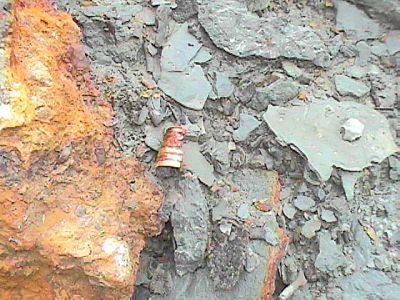
Site 1: Fossils Found
Since we had a good rain the day before, the ground was still wet but not shiney. This is great because it makes the fossils color-coded. Can you spot the Cephalopod in the picture below? The crinoids at this site had a slightly pink color. The trilobites were brown. The Bryozoans were whitish pink or gray. The clay was blue-gray. The reddish coloring came from iron oxide indicating exposure to the air and/or ground water.

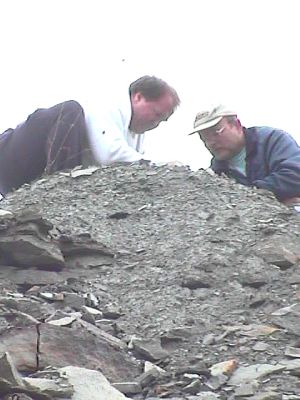
What are Greg and Dan doing up there? It looks like they found something!
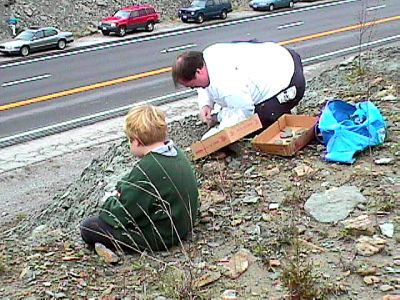
Greg was meticulously collecting parts of a large colony of Constellaria
florida
Bryozoans
, shown below in his cardboard tray. He will take this home and try to piece it
back together with Superglue gel.
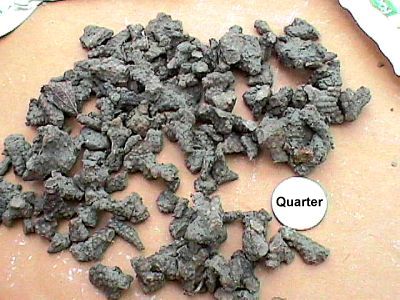
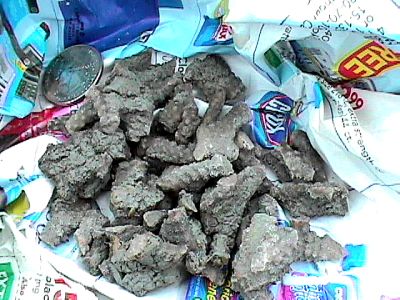
The shelf above where Greg was collecting was also littered with thousands of
ramose bryozoan fragments, just waiting for a collector to attempt their
reassembly.
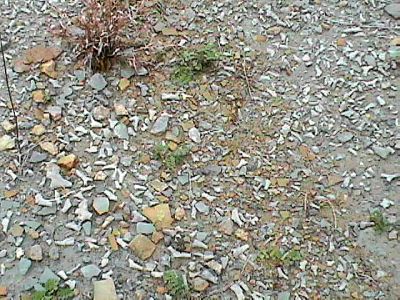
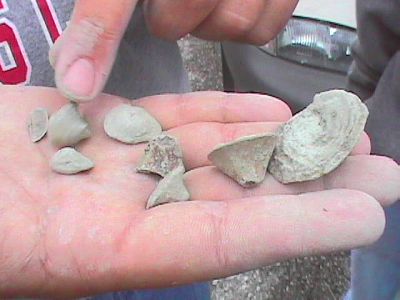
Other bryozoans found were the cone variety named Prasapora simulatrix
(above). Be sure to check the bottoms of these cones for the small rare
trilobite, Meadowtownella.
Click here
(99k) for a picture of John Tate's example, found last year on a different Kope
site in Northern Kentucky. It will give you an idea of how these Meadowtownella
trilobites
look on the bottom of Bryozoan cones.
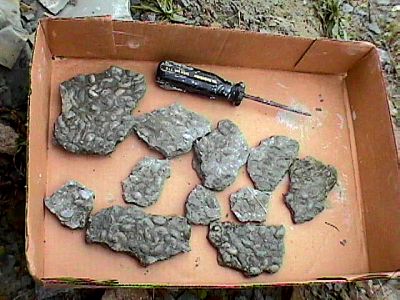
Found, also, was this pavement of the brachiopod, Sowerbyella rugosa.
Lots of crinoid stems and calyxes of
Ectenocrinus simplex and
Cincinnaticrinus varibrachialus were found as shown below.
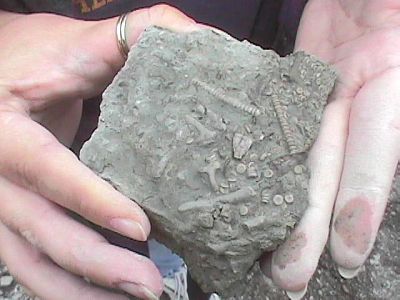
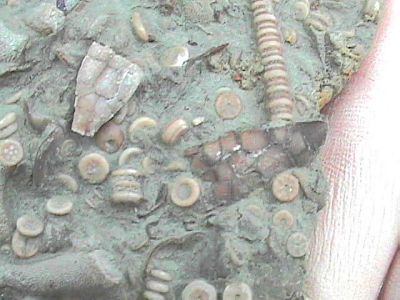
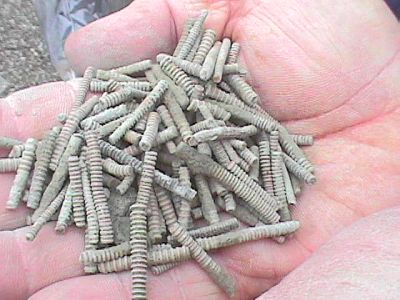
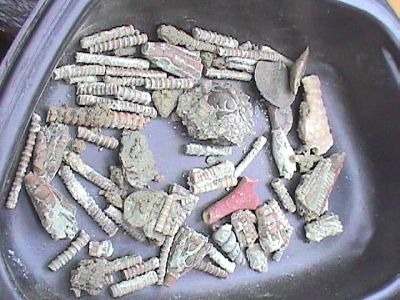
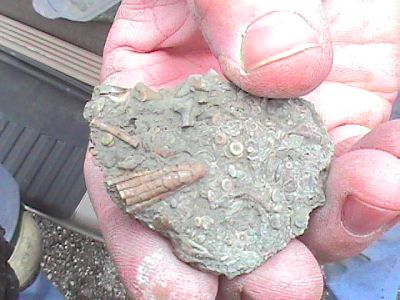
The above crinoid calyx is Ectenocrinus simplex
Also found were examples of the
holdfast
of the large
crinoid
, Anamolocrinus, encrusting
broyzoans
. In the case below, the bryozoan being encrusted was Constellaria
florida. (Click image for enlargement.)
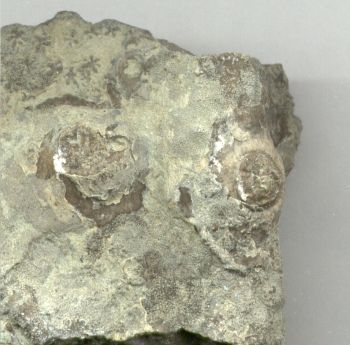
Of course,
trilobites
were present at this site, just as they are on every site, as evidenced by the
many molt parts. In the shot below, you can see a
thorax segment
of the trilobite
Flexicalymene
.
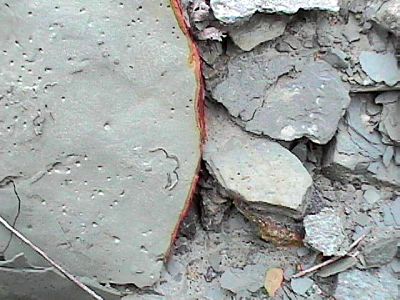
There weren't many reports of Dry Dredgers finding whole trilobites on the first
site we visited that day. Here's one, below, that is so fragile, that it was not
safe to remove the clay from the specimen on the site. It is likely to be a rare
trilobite and extreme caution must be taken to keep it in one piece.
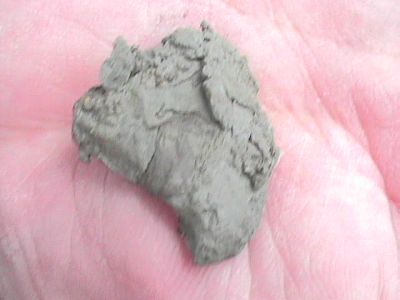
Site 1: Collecting Pg 1 || Pg 2 || Fossils Found
Site 2: Collecting || Fossils Found
Site 3: Collecting || Fossils Found
Back to Dry Dredgers Home Page
The Dry Dredgers and individual contributors reserve the
rights to all information, images, and content presented here. Permission to
reproduce in any fashion, must be requested in writing to admin@drydredgers.org.
www.drydredgers.org is designed and maintained by Bill Heimbrock.